

How do travertine and limestone form?
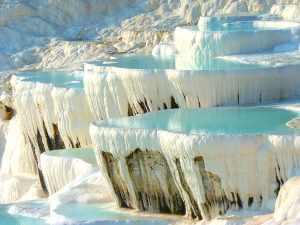
Limestone and travertine are sedimentary stones by geological definition, formed from calcium carbonate at the bottom of bodies of water and the remains of aquatic creatures. But they have distinct differences. The most significant difference is that travertine is a preliminary limestone stage formed without the high pressure and heat that ultimately forms limestone. Limestone is a much more complex and less porous stone with a smooth and uniform surface. Therefore, travertine can be viewed as a stone in an early stage of limestone formation.
Why are they different?
Understanding technical details that distinguish these two types can help decide which stone is more appropriate for a particular area.

Formation: Limestone is commonly generated in marine environments, often by accumulating shells, coral, and various organic materials. Travertine typically forms in hot springs or limestone caves, where calcium carbonate precipitates from mineral-rich water.
Durability: While both stones are relatively soft compared to other natural stones like granite or quartzite, travertine tends to be slightly softer and more porous than limestone, making it more prone to scratching and staining if not properly sealed and maintained.


Texture: Limestone tends to have a more uniform appearance with a smooth or granular texture. Travertine, on the other hand, often has a more porous texture with visible holes or pits caused by the escape of gases during its formation.
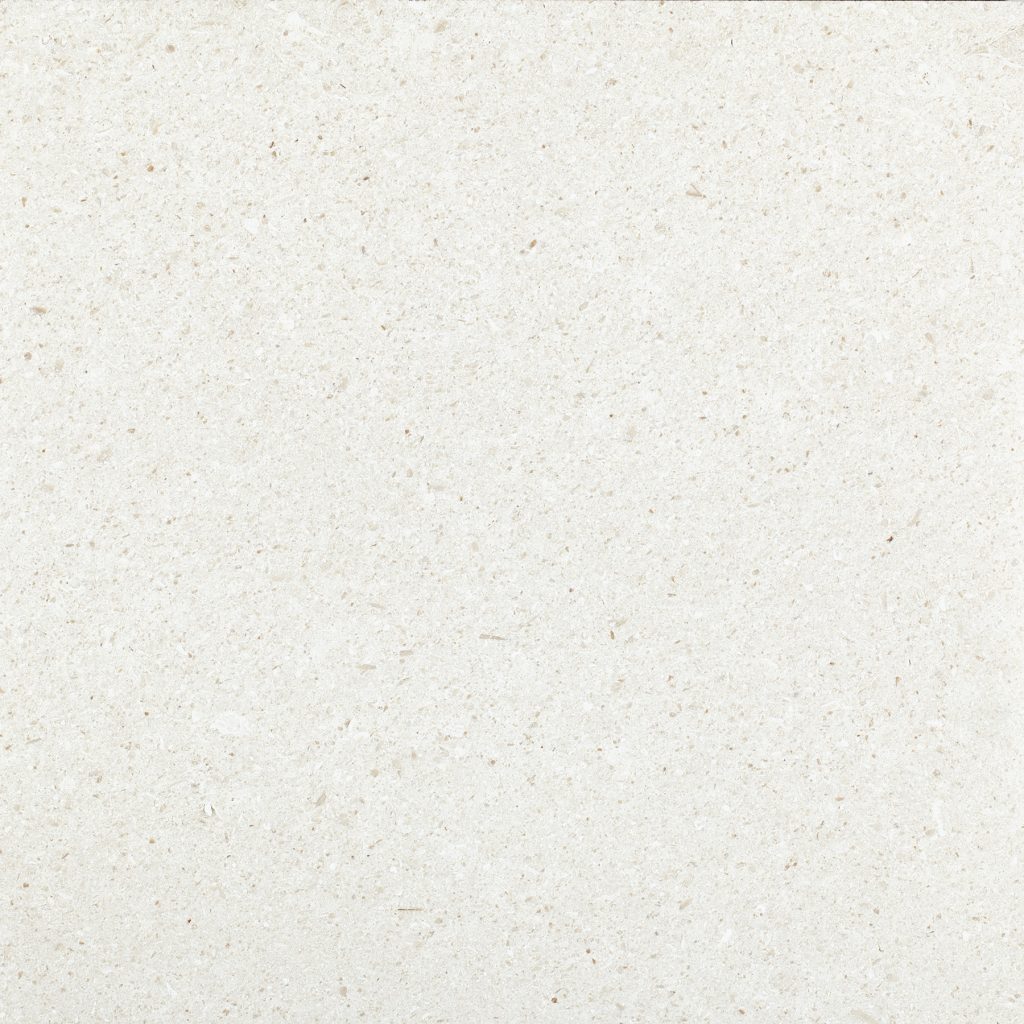
 Appearance: Limestone comes in various colours, including white, cream, beige, grey, and black, with variations in veining and patterning. Travertine typically has warm, earthy tones such as beige, tan, brown, rust, grey and pink, often with distinctive veining and colour variations.
Appearance: Limestone comes in various colours, including white, cream, beige, grey, and black, with variations in veining and patterning. Travertine typically has warm, earthy tones such as beige, tan, brown, rust, grey and pink, often with distinctive veining and colour variations.

Applications: Limestone is commonly used in architectural applications such as flooring, wall cladding, and countertops, as well as in construction materials like cement and mortar. Thanks to its unique texture and warm appearance, travertine is often used for interior and exterior flooring, wall cladding, countertops, and decorative features such as fireplace surrounds and fountain facades.


How do they vary from each other?
Travertine varieties are plentiful, with the most renowned and frequently utilized beige-brown options. Cutting methods play a significant role in determining the appearance of travertine. For instance, crosscut travertines tend to appear cloudy and warmer, while vein-cut varieties feature distinctive lines that impart a refined and elegant aesthetic.
Classical travertine stands out as a popular and widely available choice. Another notable variety is Noce travertine, prized for its captivating caramel brown hue that effortlessly complements classic projects. Its colour palette spans from creamy light brown to rich chocolate brown, often featuring hints of gold, red, and grey. Meanwhile, Silver Travertine stands apart with its unique grey or silver tones. Though less mainstream than other travertine options, it has recently gained global recognition for its remarkable versatility as a stone material.




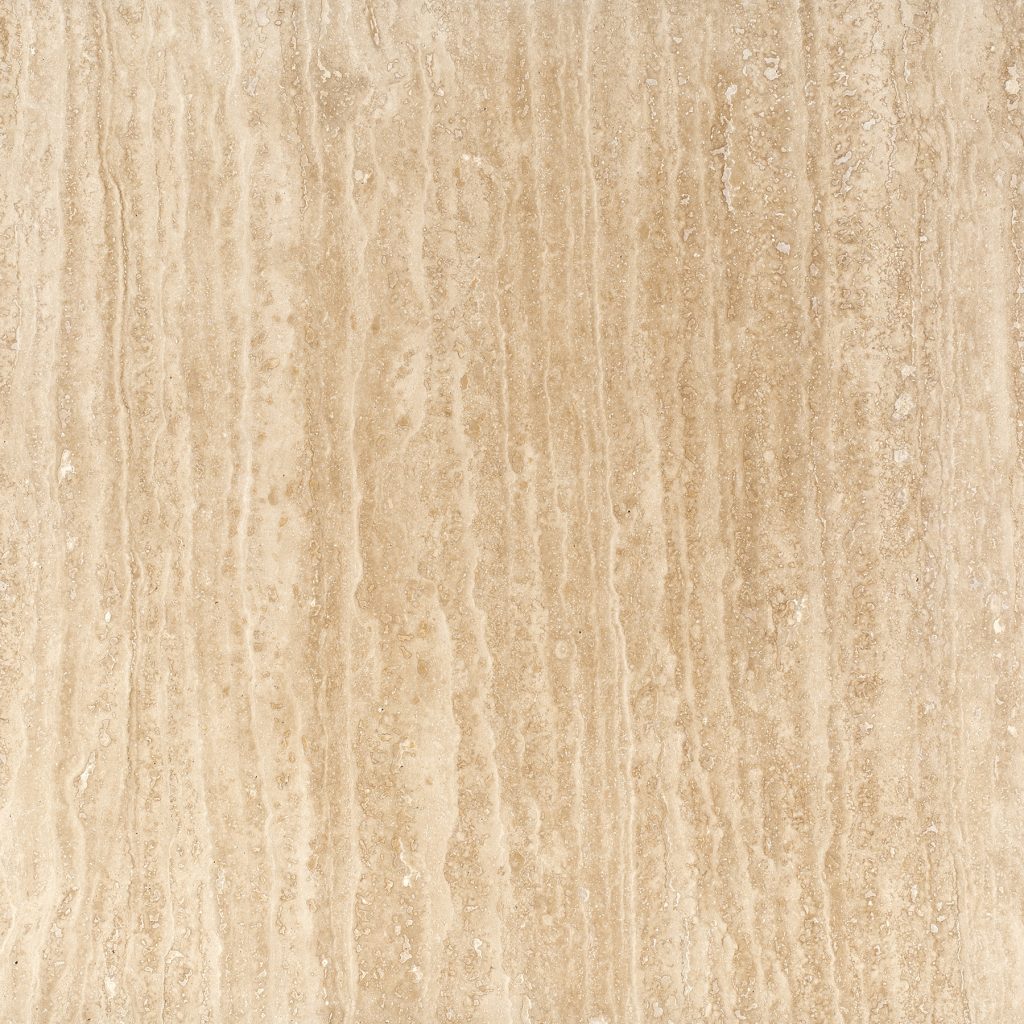

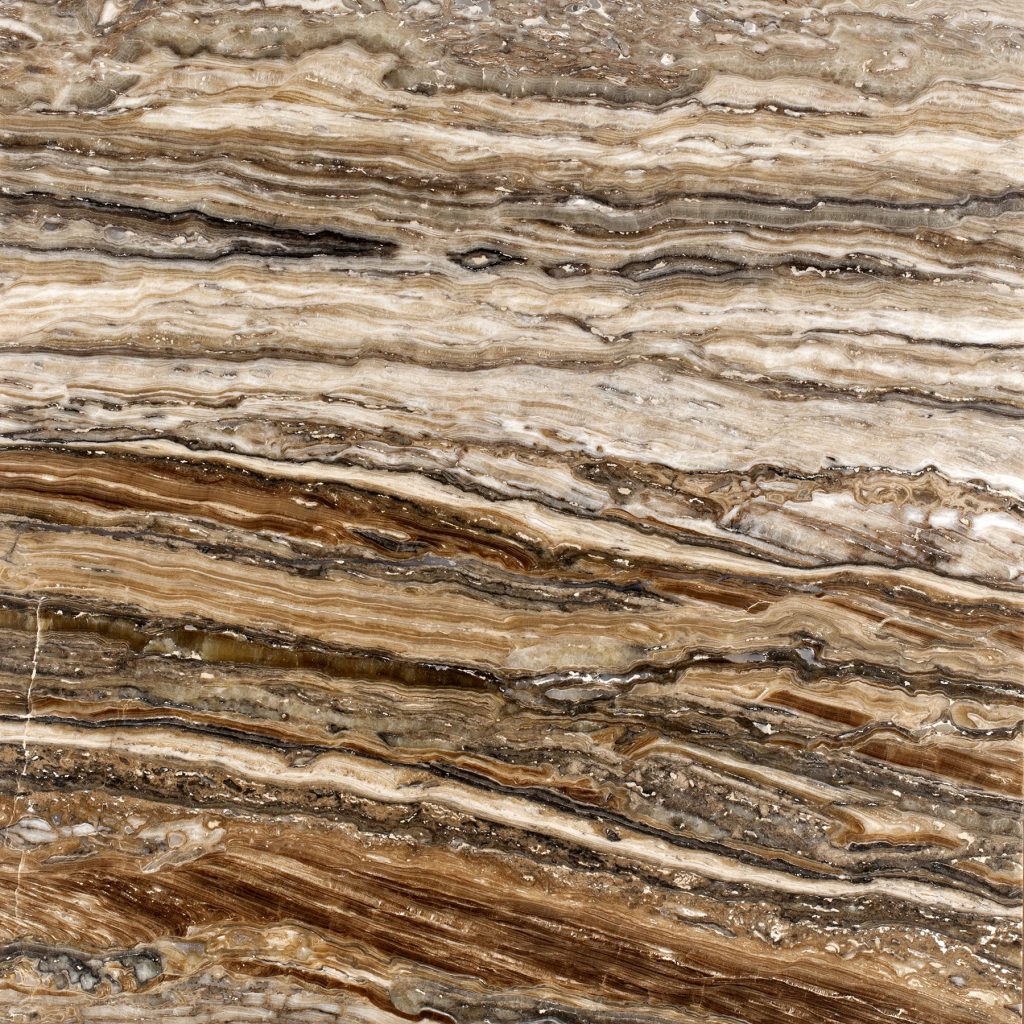
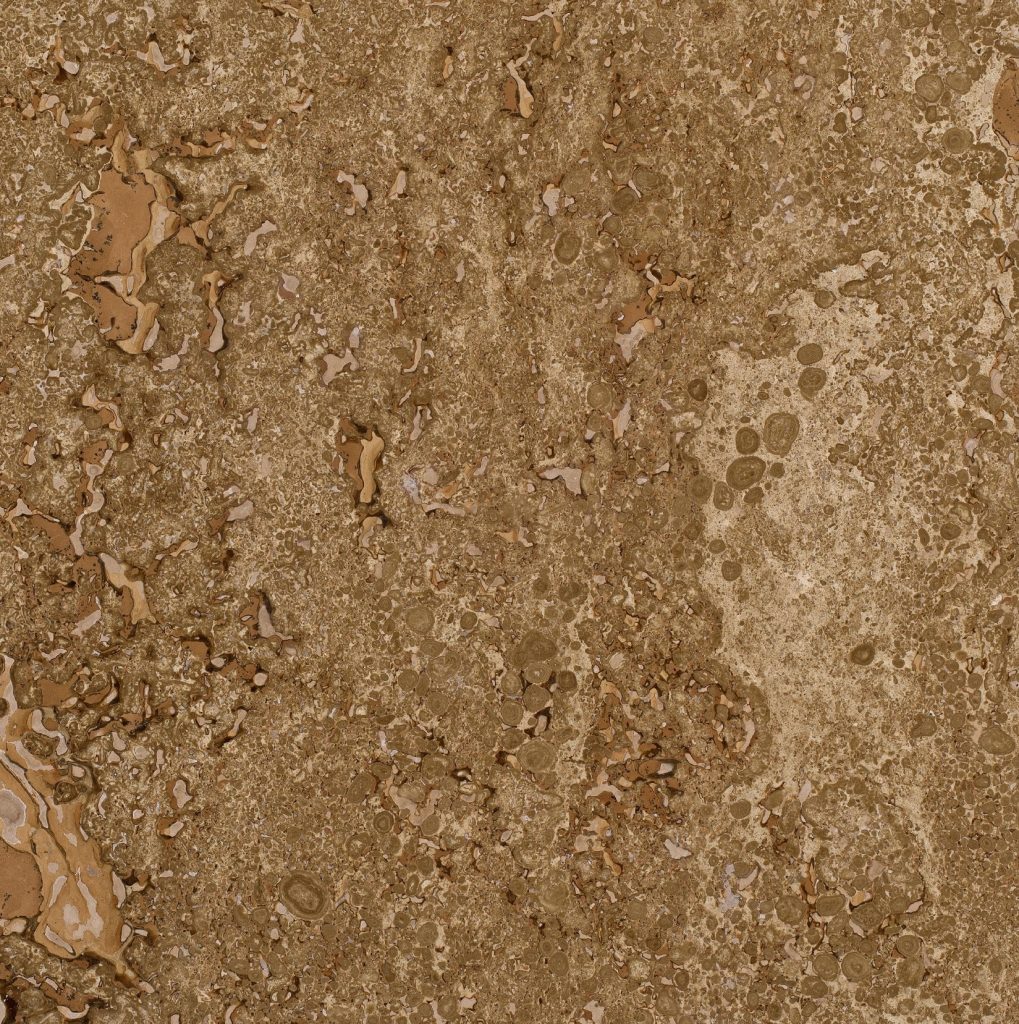
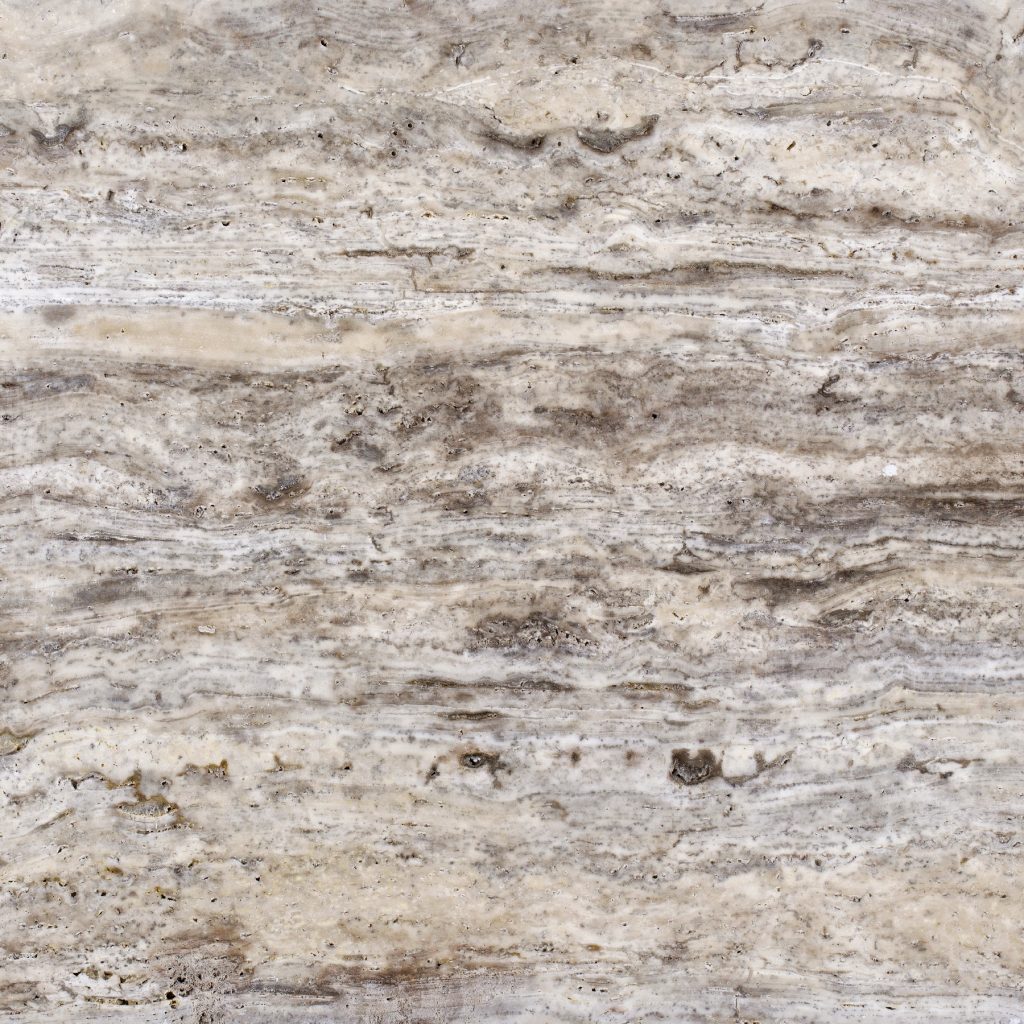
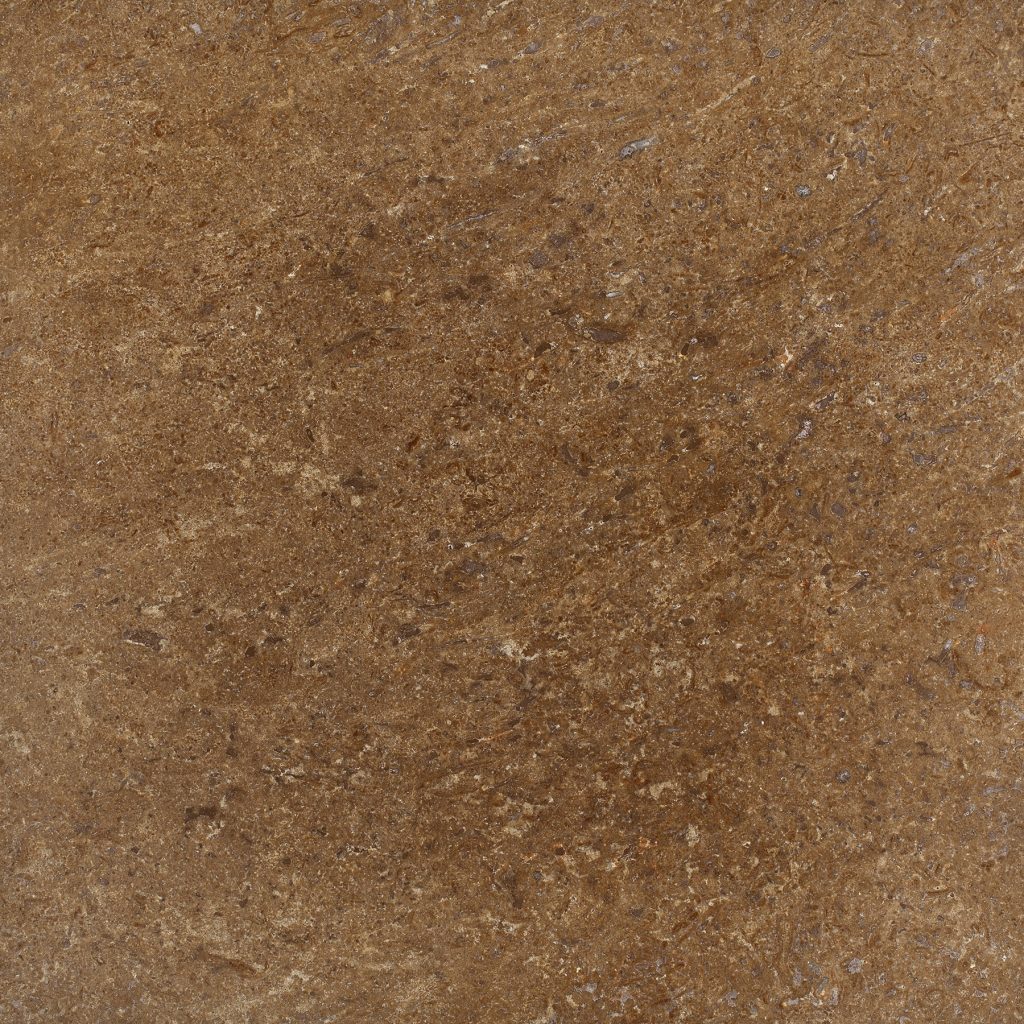
Limestone varieties in Turkey all tend to be homogenous and consistent. The grain size is medium or big. Most of the limestone is quarried in the southern area, with around half a dozen big-size quarries. The total production capacity is estimated to be around 100,000 m3 per year. Different companies tend to give individual names to the limestone they quarry, which helps to distinguish between the minor differences in appearance of other varieties.
For example, Limra is a classic Mediterranean white limestone with a light sesame-like speckle in the background. Its consistent colour makes it ideal for clean, contemporary bathrooms. Champagne limestone is a very light creamy white limestone with tiny golden fossil segments. This variety is lovely for subtle light colour schemes requiring a touch of warmth. Fossil or shell limestone can evoke a sense of history and natural beauty for its unique aesthetic appeal. It adds character to the stone, making it desirable for various architectural and design purposes.










What are the benefits of travertine & limestone?
While limestone and travertine share some similarities due to their typical composition, their distinct differences in formation, texture, appearance, durability, and applications make each stone unique and suited to different design preferences and project requirements.
 Travertine materials offer durability, natural beauty, and a slip-resistant surface. They are also popular because they are easy to clean and maintain.
Travertine materials offer durability, natural beauty, and a slip-resistant surface. They are also popular because they are easy to clean and maintain.
 Limestone products have many of the same benefits as travertine; however, limestone offers an extra advantage. Because limestone is less porous, it is less likely to stain.
Limestone products have many of the same benefits as travertine; however, limestone offers an extra advantage. Because limestone is less porous, it is less likely to stain.
Both types offer diverse colours and finishes, allowing for tailored selections to suit individual home aesthetics. When deliberating between travertine and limestone, it’s prudent to factor in budget constraints, the anticipated level of foot traffic in the designated area, and the desired overall aesthetic.
Travertine vs Limestone
Limestone and travertine are popular choices for flooring and other architectural applications. However, understanding their differences in formation, texture, appearance, durability, and applications is crucial in making an informed decision. In deciding between limestone and travertine, it’s essential to recognize that neither is inherently superior. Instead, the choice depends on which advantages and disadvantages personally hold greater significance to you.
Limestone is a highly durable and visually appealing flooring option. However, it’s important to consider some potential drawbacks and be committed to diligent care and maintenance to ensure its longevity and aesthetic appeal. While limestone is less porous and easier to clean, it requires more frequent and consistent cleaning to maintain its shine and overall appearance. Limestone is the superior and more enduring choice if you’re considering using stone flooring for applications such as pool decks or bathroom paving/flooring. Furthermore, limestone is more compatible with features such as underfloor heating than travertine, ensuring optimal performance and satisfaction.
Due to its versatility and high-quality look, travertine is a popular choice for splashbacks, wall cladding, and flooring. Travertine’s darker hue can hide dirt more effectively than limestone’s, meaning it may require less frequent cleaning. While limestone is less porous when properly sealed and simpler to clean, it demands more regular attention to maintain its gleaming and pristine appearance.
Travertine Pros:
♥ Travertine exemplifies exceptional durability, capable of withstanding the tests of time with its robust composition.
♥ Travertine exhibits impressive heat resistance, making it a reliable choice for areas exposed to high temperatures ensuring long-lasting beauty and functionality.
♥ Maintenance is straightforward: regular sweeping or vacuuming, with occasional mopping using a mild cleanser when needed.
♥ Despite being a filled material with diligent maintenance and care, travertine ensures enduring beauty and functionality, promising longevity and reliability.
♥ Travertine offers a rich array of earthy and warm tones, infusing spaces with an inviting intimacy. Its diverse range of colours and patterns adds depth and character, creating a harmonious ambience in any environment.
♥ During the hotter months, within pool areas, travertine’s capacity to retain additional water may result in more pronounced sun refractions than limestone.
Limestone Pros:
♥ Limestone stands out for its remarkable durability, owing to its status as a harder stone than travertine.
♥ With its reduced porosity and absence of fillers like travertine, limestone boasts an extended lifespan.
♥ Its minimal surface treatment translates to lower maintenance costs compared to travertine.
♥ Limestone’s superior malleability facilitates easier cutting and shaping, which is ideal for achieving a bespoke aesthetic.
♥ Its exceptional resistance to high temperatures renders limestone an optimal choice for outdoor applications.
♥ Limestone offers enhanced traction and reduced sun reflection, making it suitable for harsh winter conditions with water, cold, and ice.
♥ The compatibility with underfloor heating sets limestone apart from resin-filled travertine.
♥ Limestone exhibits better resistance to staining and discolouration, ensuring long-lasting aesthetic appeal.
♥ Limestone maintenance is straightforward. It requires only routine sweeping and vacuuming, with the option of mopping using a mild cleanser.
Travertine Cons:
♦ Sealing it before use is crucial, effectively shielding it from potential staining and preserving it as travertine can be susceptible to staining.
♦ While travertine is a versatile choice for many outdoor settings, it should be avoided in freezing climates. The water absorbed within the stone can expand, potentially damaging it.
♦ Travertine requires more maintenance due to its porous nature.
♦ Careful consideration and appropriate measures should be taken to protect the travertine in wet areas such as pools and bathrooms due to its water-absorbent nature.
♦ Due to its relatively softer nature, travertine is more prone to wear and tear over time than harder stone materials.
Limestone Cons:
♦ Sealing limestone before use is crucial due to its proneness to staining and scratching.
♦ Even though it is less porous than travertine, limestone is also a porous material, making it susceptible to absorbing liquids and stains.
♦ Limestone is sensitive to acidic substances, which can etch or damage the surface if not promptly cleaned.
♦ Limestone is durable but easier to work with than granite or marble. It may be prone to scratching or chipping in high-traffic areas.
♦ Limestone needs regular sealing to look good and stay protected. Without proper care, it can wear out faster than other flooring materials.
♦ Limestone has fewer colour options than other natural stones, which may limit design choices for some projects.
“Stone Value”
When determining the value of different stones, it is vital to consider three critical factors:
⇒ Price: It is noteworthy that the lower the purchase price and ongoing costs combined with the extended lifespan of the stone, the more valuable an investment it becomes in the long run. Regarding pricing, travertine and limestone stones can differ significantly in cost. These disparities may arise due to regional availability, transportation distances, and manufacturing costs. Thus, comparing prices and determining which stone offers the best value for money is crucial.
⇒ Longevity: Another critical factor to consider when evaluating the worth of stones is their longevity. Limestone and travertine can have varying levels of durability, which can influence their longevity. Examining the life span of each stone can help ensure that the investment made will last for an extended period.
⇒ Maintenance: The third factor to consider is the maintenance costs associated with each stone. The amount of maintenance required for each stone can impact the overall cost of ownership. It is essential to research and compare the maintenance costs of each stone to make an informed decision.
Considering all three factors when determining the value of stones like limestone and travertine is paramount. A stone with a lower purchase price, ongoing costs, and a longer lifespan becomes a more valuable investment. Therefore, weighing all three factors and making an informed decision when investing in stones is crucial. By taking the time to research and compare these factors, one can make an informed decision and ensure that their investment is sound.
Which one is more popular?
Colour selection is one of the primary considerations in any building or remodelling project. Travertine and limestone are popular choices depending on the colour palette in terms of overall appearance. They might be similar colours but still have different results.
Turkish limestone is ideal for modern, airy, light interior and outdoor schemes. It generally comes in bright, white and champagne shades, consistent colours throughout the stone.
Travertine tends towards a darker palette of earthy tones such as gold, brown, red, tan, ivory, grey, etc., with more substantial streaks. The lightest shades of travertine are close to limestone. The colour of travertine is affected by its iron compounds and other organic impurities. Travertine is perfect for creating a calm, Zen-like ambience in living spaces.
Thus, the advantages and disadvantages of colouring limestone versus travertine are entirely subjective. Individual preferences and aesthetic preferences ultimately guide the most suitable design and style.
What area can they be used?
 Travertine and limestone share similar application areas, yet nuances in maintenance and durability merit consideration.
Travertine and limestone share similar application areas, yet nuances in maintenance and durability merit consideration.
Travertine is best suited for indoor use, especially in adverse weather conditions. If used as flooring, it needs to be sealed a bit more often, but it is an excellent choice for wall and backsplash installations, especially in its unfilled and unpolished forms, which give an antique and earthy feel. Unsealed travertine is more susceptible to staining and wear, but its darker hue helps to conceal imperfections. It is perfect for drywall areas with various finishes, ranging from high polish to split face. Travertine adds a touch of elegance to fireplaces and backsplashes, and it complements the warmth of wood.
 On the other hand, limestone is perfect for outdoor applications due to its high-temperature tolerance and non-porous nature. It is commonly used in outdoor pools and wet areas such as bathrooms since it provides enhanced grip and reduced sun reflection. Limestone is durable and can withstand water, heat, and harsh winters, making it ideal for underfloor heating installations, unlike resin-filled travertine. Despite decades of wear and tear, limestone maintains its appeal, but it is advisable to reseal it periodically. Unsealed limestone is also suitable for walls, which adds to its versatility and charm.
On the other hand, limestone is perfect for outdoor applications due to its high-temperature tolerance and non-porous nature. It is commonly used in outdoor pools and wet areas such as bathrooms since it provides enhanced grip and reduced sun reflection. Limestone is durable and can withstand water, heat, and harsh winters, making it ideal for underfloor heating installations, unlike resin-filled travertine. Despite decades of wear and tear, limestone maintains its appeal, but it is advisable to reseal it periodically. Unsealed limestone is also suitable for walls, which adds to its versatility and charm.
How much do they cost?
Pricing is another critical criterion when choosing a stone type. Travertine is an affordable option in the natural stone range, making it an excellent choice for budget-minded customers. Turkey has massive deposits of travertine and a high production capacity. The stone’s quality is also high, making it a competitive option compared to other products. It is estimated that around 30% of the world’s travertine deposits are in Turkey.
Limestone is more expensive initially, but the higher cost is justified by its longer life span and lower maintenance costs. Being a harder stone that is not filled with resin like travertine usually is, limestone lasts longer. Limestone is worth investing in, especially in areas with high traffic and extreme weather fluctuations.
However, prices vary depending on the region, supply availability, and quality of the stone. Both materials offer a variety of price points to suit any budget. Therefore, a particular area and quality level must be specified for comparison. It’s essential to remember that cheaper sometimes means better. When it comes to selection, quality should be your top priority. Compare prices and materials to ensure you get the best value for your money.
Design is not making beauty, beauty emerges from selection, affinities, integration, love”
Louis Kahn.
Travertine and limestone are esteemed natural stone choices that imbue your home with timeless elegance and lasting durability. As explained above, there are clear pros and cons to using both limestone and travertine. Therefore, it’s vital to understand the advantages and disadvantages of each before making a choice. You can confidently select the ideal tile for your specific requirements with a thorough understanding of their characteristics. Nevertheless, finding the perfect option can be daunting for many, requiring assistance to kickstart the search. Ultimately, the ideal stone selection hinges on personal preferences, budget considerations, priorities, and intended applications.

